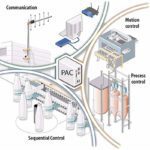Non-uniform memory access (NUMA) is a kind of memory architecture that allows a processor faster access to contents of memory than other traditional techniques.
In other words, in a NUMA architecture, a processor can access local memory much faster than non-local memory. This is because in a NUMA setup, each processor is assigned a specific local memory exclusively for its own use. This eliminates sharing of non-local memory, reducing delays when multiple requests come in for access to the same memory location.

NUMA architecture is common in systems with multiple processors. For example, in industrial controls, particularly in systems with multiple processors, this is beneficial because it speeds up overall system performance times. NUMA allows for fast and easy access to memory for the processors, as opposed to shared memory architectures where access times may be longer, thus slowing down execution of key processor and system tasks.
NUMA architecture was developed largely due to the advent of modern microprocessors that are faster than memory speeds. As a result, local memory is placed closer to the processor, shortening signal path lengths and reducing latency times with fewer delays in accessing memory.







Leave a Reply
You must be logged in to post a comment.